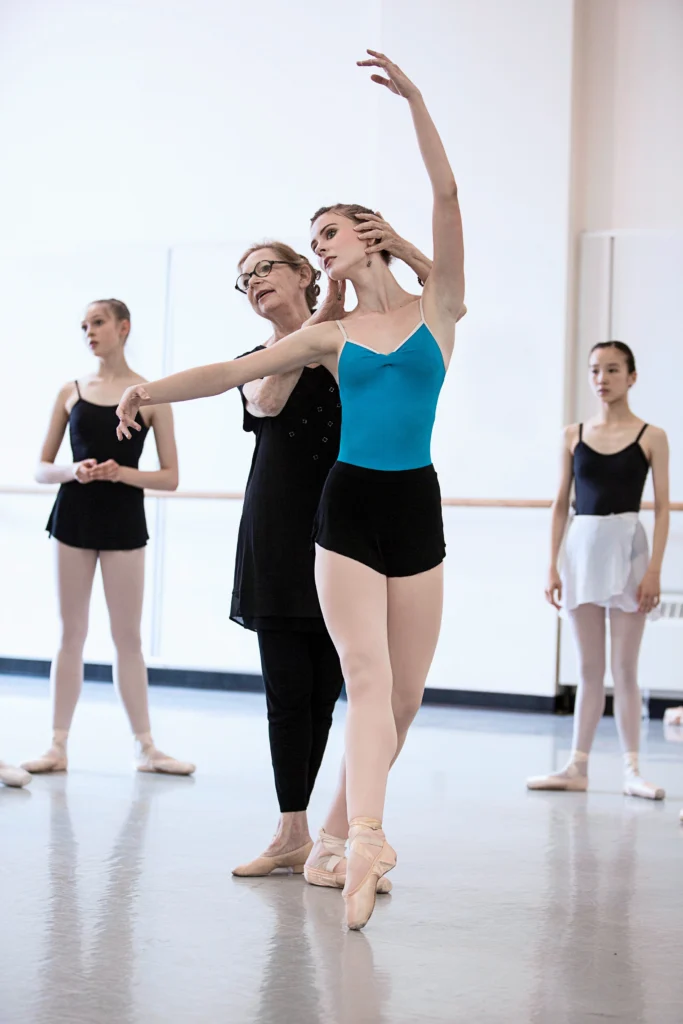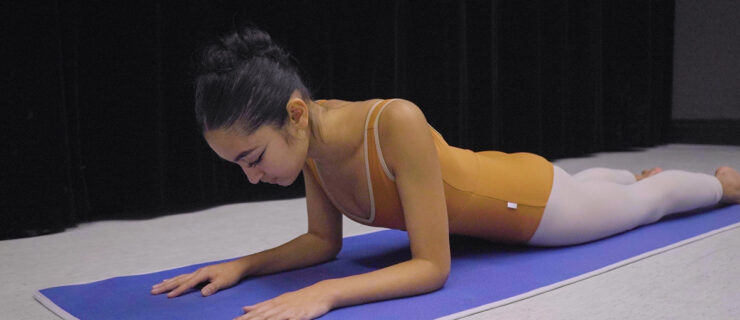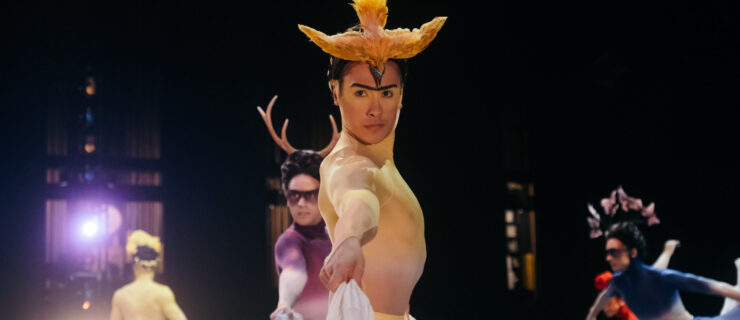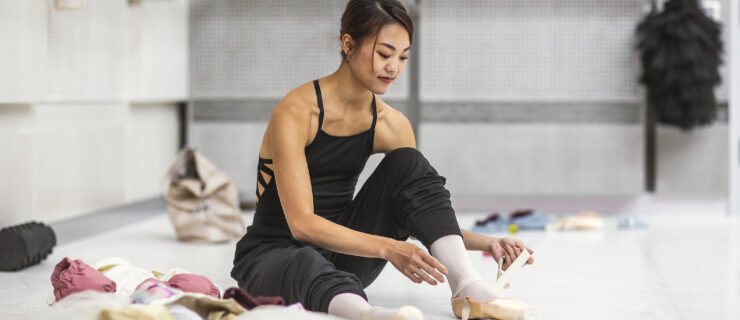Managing Hyperextended Knees: How to Work Smart, Build Strength and Avoid Injury
Most dancers with hyperextended knees consider them a blessing—until something goes wrong. While hyperextension can create elegant lines, excessively mobile joints can be prone to injury. “They have to be handled with care,” says Adriana Wagenveld, a dancer with Grand Rapids Ballet. Over time she has learned how to use her hypermobility safely and effectively. But that doesn’t mean it’s effortless. “It’s something I’m still navigating in real time,” she says. “You don’t wake up and say ‘Now I’ve got it.’ Your body is changing every day.”
Hyperextension, or genu recurvatum, is when the knee bends backward beyond a straight line. “The technical definition of recurvatum is knee extension greater than 5 degrees,” says Dr. Bridget Quinn, MD, a physician in the Division of Sports Medicine at Boston’s Children’s Hospital. But any amount of excessive mobility can affect other parts of the body.
“Once I start to see hyperextension—it could be 5 degrees or 10 degrees of hyperextension—that can be a cue for me about what could be happening in terms of the joint alignment, the muscular contraction around the joint, and even the overall postural alignment,” says Quinn, who is also Boston Ballet’s company physician.

Hypermobility is often caused by loose ligaments connecting the bones, allowing the joint to move beyond its normal range. While the increased mobility may be prized in the dance world, it’s crucial for the dancer to maintain joint stability to mitigate risk of injury. The lack of stability and support for the knee joint can lead to kneecap subluxation/dislocation, meniscus damage, ligament tears, and arthritis.
“That knee range of motion impacts the whole kinetic chain,” says Quinn, potentially causing problems for the rest of the body. Hip and lower back issues, such as posterior element impingement or stress injuries, are influenced by prolonged standing in knee hyperextension with the pelvis tipped forward and the lower back arched.
Dancers with hyperextended knees often have a greater-than-average range of motion in one or more other joints. Wagenveld, who has Ehlers-Danlos syndrome (a connective-tissue disorder), has hypermobility in her elbows, hips, shoulders, and feet. Proprioception, or awareness of where your body is in space, also tends to be decreased in hypermobile dancers, further adding to the risk of injury in the studio or onstage.
Using Your Hyperextension the Right Way
“The dancer with extreme hyperextension has to adjust how they work,” says Marjorie Thompson of Pacific Northwest Ballet School. From the beginning—starting in first position—she teaches her students to lengthen the legs instead of jamming the knees back or locking them. “Even if they’re hyperextended, their heels have to touch,” she says. She also insists they have their weight on three points in the foot: below the first and fifth toes, and on the heel.
Pointe shoes “add another hurdle,” says Thompson. “If you’re on pointe and you have moderately hyperextended knees, your feet are able to fit snugly in fifth position and be very strong on pointe,” she says. “But dancers with excessive hypermobility have to soften their knees to a certain degree and pull up the muscles so they’re neither weak nor pushed back.”

She points to ballerinas such as Sylvie Guillem and Patricia Barker as examples. “They’re very strong women and they’ve learned to work with their hyperextension.”
Thompson advises dancers to also work on building strength in the hamstrings, quadriceps, and glutes to create a solid foundation for movement. “Ballet is so based on turnout—if your external rotator muscles are weak, your turnout’s going to be weak.” (Click here and here for some strengthening exercises.) Dancers need to learn to hold that rotation while standing on one leg in retiré passé or développé à la seconde. That’s especially difficult for those with hyperextended knees, because the weight tends to shift backward onto the heels. Thompson recommends counteracting this tendency by instead thinking of bringing your weight forward over the toes. Developing the support of the external rotators also helps prevent the knee joints from collapsing when you land from a jump.
These days there is more awareness of the downside of extreme hypermobility, says Wagenveld. But hyperextended dancers still need to understand how to manage their hypermobility so they can avoid injury and reach their fullest potential. (See below for some helpful exercises.) “Never let your hyperextension be a passive thing,” she says. Learn how to use your hypermobility, and use it well.
Maximize Your Potential, Minimize Your Risk
According to Marika Molnar, founder and president of Westside Dance Physical Therapy, excessive knee hyperextension often comes down to habit. Many of her clients have a tendency to push back into their knees whether they’re walking, dancing, or just standing on one leg waiting in line.
“The knee ends up being the victim between the hip and the foot,” she says. If a dancer’s foot goes very far forward on pointe, for instance, the knee goes backward and the hip goes forward. The knee counterbalances the foot, ankle, and hip, and the dancer ends up gripping the knee.
It’s a dangerous habit that dancers should unlearn—inside and outside of class—and replace it with healthier ones.
“We should all be able to flex the ankle just using the muscles of the anterior lower leg, without tightening the knee and elevating the kneecap and pushing back into the knee,” says Molnar.
Three Exercises to Control Hyperextension
Marika Molnar recommends these useful exercises to control knee hyperextension:
1. Muscle memory
This is a simple way to slowly develop muscle memory and leg strength.
- Sit on the floor with your legs outstretched in front of you so that you can see your kneecaps move.
- Flex your right ankle without allowing the kneecap to move and without lifting the heel off the floor. Use your lower leg muscles (tibialis anterior) rather than hyperextending the knee using the quadriceps.
- Hold for 10 seconds and repeat on the other leg.
- Do 6–8 reps on each side.
2. Ankle flexion
Controlling your ankle flexion will help you safely perform a demi-plié or land from a jump.
- Sit on a chair with your feet placed 4–5 inches in front of your knees.
- Flex one ankle 5–6 times and then the other, using only your ankle joint instead of your knee. Make sure the foot is flexed up in a neutral position, without sickling or winging it.
- Move your feet an inch toward you and repeat, gradually bringing your feet closer until they are below your knees.
3. Hamstring and core strength
Strengthening and stabilizing your core is important for movements to the back, like arabesque, and helps to maintain healthy alignment of the hips, knees, and ankles.
- Standing with your feet parallel, bend your left knee 90 degrees behind you. Keep your thighs parallel and use your deep abdominal muscles to avoid tipping your pelvis forward. Do not allow your weight-bearing knee to hyperextend.
- Stay for 10 seconds, then repeat on the other side.
- Perform 5–6 reps.






